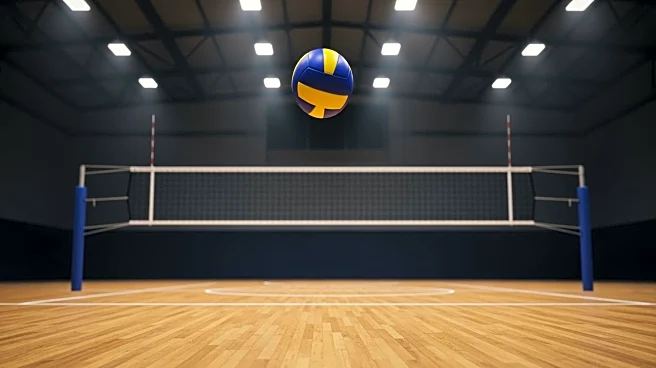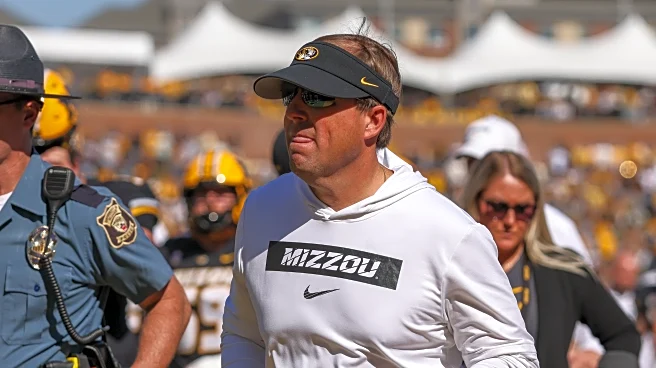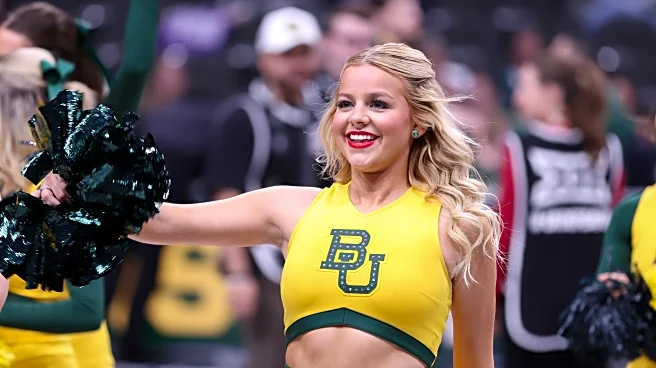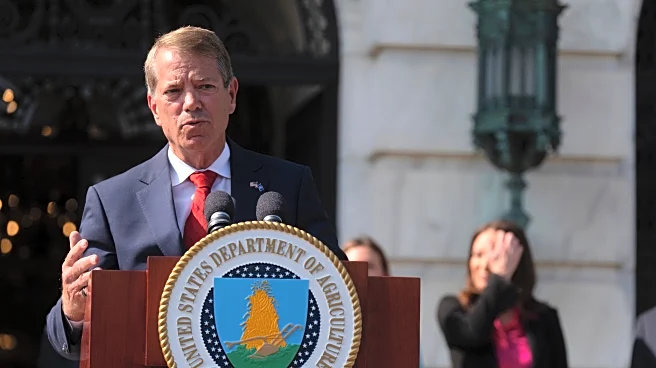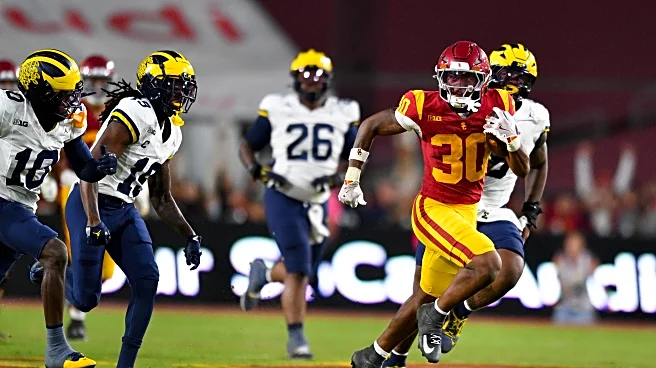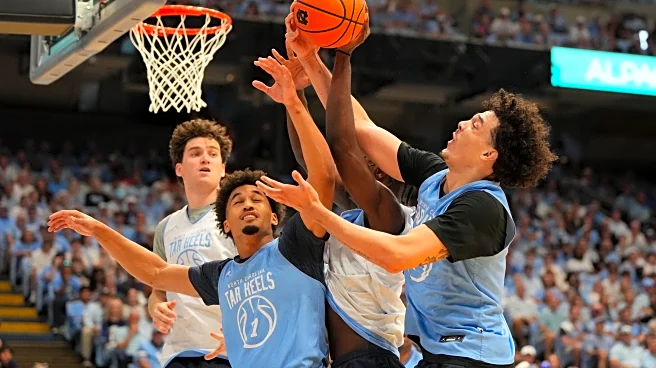What's Happening?
The NCAA Women's College Volleyball Bracketology for the 2025 tournament has been released, highlighting the top seeds and teams on the bubble. Nebraska, with a perfect 16-0 record and 10 top-50 RPI wins,
is the No. 1 overall seed. Texas follows as the No. 2 seed, remaining unbeaten. The ACC's Pitt and Louisville complete the top line, with their upcoming matches potentially influencing the final seedings. The bracket includes 31 automatic bids and 33 at-large teams, with the top eight teams in each region seeded. The Final Four is scheduled for December 18 in Kansas City, Missouri, with the finals on December 21. Teams like Georgia Tech and Auburn are on the bubble, needing key wins to secure a spot in the tournament.
Why It's Important?
The bracketology provides critical insights into the competitive landscape of NCAA women's volleyball, highlighting the dominance of teams like Nebraska and Texas. It also underscores the importance of upcoming matches for bubble teams such as Georgia Tech and Auburn, which could significantly impact their chances of making the tournament. The seeding and matchups will influence the strategies and preparations of the teams involved, affecting their potential success in the tournament. This analysis is crucial for fans, coaches, and players as they anticipate the unfolding of the tournament and the potential for upsets and standout performances.
What's Next?
As the tournament approaches, teams on the bubble, such as Georgia Tech and Auburn, will focus on securing key victories to improve their chances of selection. Matches between top-seeded teams like Pitt and Louisville will be pivotal in determining final seedings. The NCAA volleyball committee will continue to monitor team performances and RPI rankings to finalize the bracket by November 30. Fans and stakeholders will watch closely as teams vie for a spot in the prestigious tournament, with the Final Four set to take place in Kansas City, Missouri.
Beyond the Headlines
The bracketology not only highlights the competitive nature of NCAA women's volleyball but also reflects broader trends in collegiate sports, such as the increasing visibility and support for women's athletics. The strategic decisions made by teams and coaches in response to the bracketology can influence recruitment, training, and long-term program development. Additionally, the tournament's outcomes may impact the future of NCAA volleyball, including potential changes in seeding processes and tournament structures.



